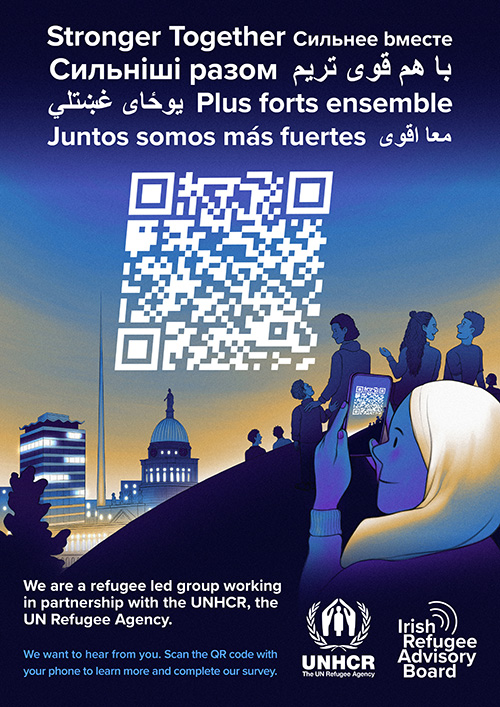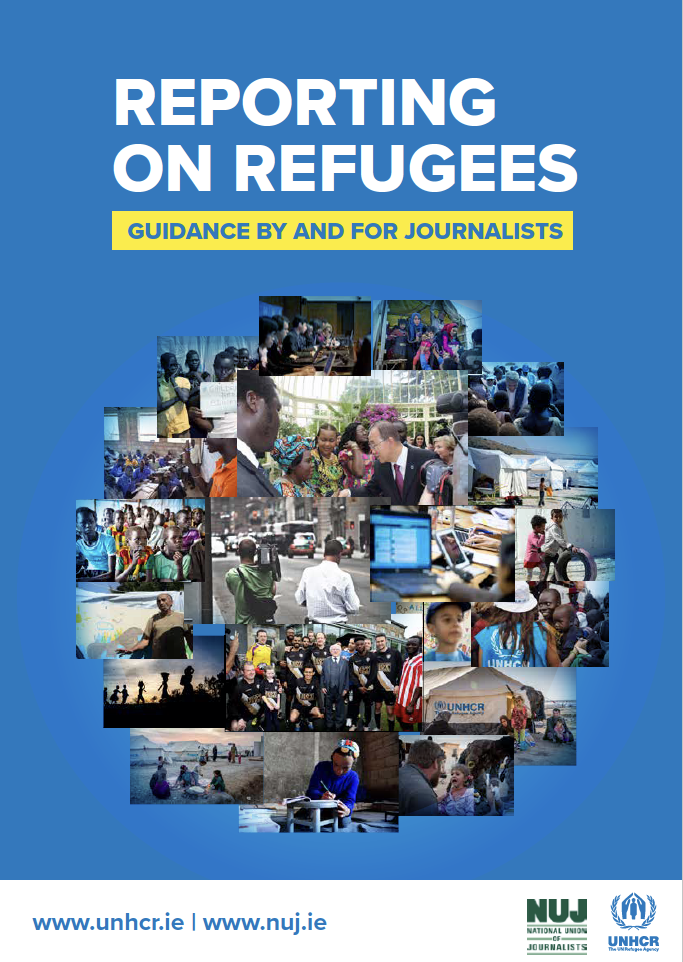UNHCR Global Appeal 1999 - Guatemala
UNHCR Global Appeal 1999 - Guatemala
Basic Facts
What we do
Support two durable solutions for Guatemalan refugees in Mexico: help them repatriate and provide reintegration assistance within Guatemala during an initial period of return; and facilitate the legal, social and economic integration of the remaining Guatemalans in Mexico.
Who we help
Some 24,000 Guatemalan refugees in the three southern-most states of Mexico, as well as more than 10,240 refugees who will have returned to Guatemala between January 1996 through June 1999.
Our requirements
US$ 2,821,380
Our offices
Guatemala: Guatemala City, Huehuetenango.
Mexico: Mexico City, Chiapas, Campeche.
Our partners
Guatemala: National Commission for the Care of Refugees, Returnees and the Displaced (CEAR), Centre Canadien d'Etudes et de Cooperation Internationale (CECI), Pastoral Social (OTARDE), Conferencia de Religiosos de Guatemala (CONFREGUA), Empresa de Desarrollo y Servicios (EDS), Asociación de Apoyo Integral (ASI), Médecins Sans Frontières-MSF France, Switzerland and Spain, Médecins du Monde - MDM Spain and France, IDEAS, Asociación Agua (AGUA), CEIBA, ASECS, The Lutheran World Federation (LWF).
Mexico: Commission for Assistance to Refugees (COMAR), Investigación y Desarrollo Femenino (IDEFEM), Administración RH S.A. (ARSHA), Promoción de Servicios Comunitarios (PROSECO), CADECO, CAMADDS, DESMUNI, PACEPIC, Organized Mothers of Handicapped Children (MONE).
Background
As a result of more than three decades of conflict in Guatemala, some 50,000 persons became refugees in Mexico, primarily in the southern states of Chiapas, Campeche and Quintana Roo. Though there was no final peace agreement, UNHCR helped more than 24,000 refugees return home between 1993 and 1996. The signing of the comprehensive peace agreement in Guatemala on 29 December 1996 put an end to 36 years of civil conflict. It also demonstrated the Government's commitment to democracy and human rights, rehabilitation and development, and the facilitation of refugee return. The Government works closely with refugee representatives to negotiate the purchase of land for collective returnee groups. The registration of such groups ended in December 1997, with the UNHCR-coordinated movement of all collective groups planned for completion by the end of 1998. More than half the refugees repatriating between 1996 and 1998 returned in these collective movements. Approximately 22,500 Guatemalans remain in camps and settlements in southern Mexico; another 1,500 Guatemalans are dispersed in Chiapas. For a variety of reasons, most Guatemalan refugees have expressed their desire to remain in Mexico. In August 1996, the Mexican Government announced the inauguration of the Migratory Stabilization Programme for refugees in the states of Campeche and Quintana Roo. Refugees in these areas had greater access to land and so greater possibilities for self-sufficiency. Through the programme, refugees could apply for citizenship. In June 1998, the Government generously expanded the opportunity for permanent residence to refugees in the state of Chiapas.
Repatriation
With the last collective returns in late 1998, the organized repatriation and reintegration of Guatemalan refugees from Mexico enters its final phase. The programme is scheduled to close by June 1999. During the last six months of operation, UNHCR plans to repatriate some 300 individuals (60 families), offering them transportation, agricultural, and housing packages. UNHCR will continue to provide additional assistance to women returnees, particularly in the preparation of agricultural packages, provision of sanitary assistance, equal control over food resources and special support to female heads-of-households when necessary.
Reintegration
As Guatemala continues its rehabilitation and development, increasing numbers of government and other development actors are working in the areas of return. UNHCR welcomes this trend, as addressing the long-term development needs of these communities is beyond UNHCR's mandate. UNHCR will limit its reintegration activities to the completion of projects begun in 1998, and the implementation of new, modest projects for the ten communities that returned in 1998. These settlements received no reintegration assistance upon arrival due to funding shortages. Projects will focus on such areas as water, health, primary education and forestry management and will be completed prior to June 1999. In all activities, UNHCR will work with its counterparts to involve women in project design and management.
Protection
Personal documentation is crucial for the enjoyment of basic political, civil and socio-economic rights. The lack of such documentation has been a major national problem not only among returning refugees, but also among uprooted and other Guatemalans. UNHCR will continue working with the Government to document those who returned during late 1998 and the 300 returnees who will arrive in 1999. Special attention will be paid to the documentation of girls and women. UNHCR will also support an evaluation of the national documentation campaign to determine its impact on the legal framework, and assess both the numbers documented and the capacity of the Civil Registries. UNHCR's contributions to this project will also terminate in June 1999. UNHCR facilitates counselling services to women and children victims of violence and trauma.
Integration within Mexico
The local integration programme in Mexico is two-pronged: refugees are assisted in becoming self-sufficient, documented immigrants; and support is given to those refugees who chose to relocate to Campeche and Quintana Roo where there is increased access to land and employment. UNHCR has an agreement with the Mexican Government to ensure that refugee women are no longer considered as economic dependents of their husbands in migratory documents, no matter where they live. In all three states, UNHCR assists refugees by: documenting refugees (including birth certificates for children born in Mexico, and identity documents for women); helping legalize their immigrant status within Mexico; regularizing land purchases; supporting the incorporation of refugee settlements into Mexican villages, in part through social infrastructure projects, such as schools, clinics, electricity and water systems; and strengthening self-sufficiency.
Campeche & Quintana Roo States
In these two states, the local integration process has advanced considerably. More than 600 refugees have become naturalized citizens and another 1,900 requests are being processed. During 1999, UNHCR will complete the immigration status process for all refugees choosing to remain. A more complex issue is the legalization of land tenure by the refugees. UNHCR is working with the Government of Mexico to transfer ownership of 19,000 hectares of land to the refugees through a credit programme, and to transfer UNHCR funded infrastructures (schools, clinics, roads) to national and local institutions. These processes should be finalized by mid-2000. Administrative delays and political changes due to elections could hinder the implementation of both projects. Both projects are complex and require UNHCR presence at local levels to advocate for the refugees and ensure equality for women. UNHCR also promotes self-sufficiency among refugees in the two states. Thanks to the 12 communal credit schemes established, more than 500 people - 52 per cent of whom are women - are working full-time in income-generating projects. The credit scheme programme has an impressive 87 per cent repayment rate. In 1999 UNHCR will phase out its financial participation in Campeche, anticipating that the credit funds will be self-sufficient and sustainable, while strengthening credit funds and training participants in Quintana Roo where start-up was delayed. Female participants receive special training in literacy, administration and technical management. Women-adolescents benefit from awareness-raising campaigns on culturally and ethically sensitive reproductive health, AIDS, substance abuse and sexual violence.
Chiapas
This state is one of the three poorest states in Mexico, with limited land available. Refugees have dispersed over some 4,000 square kilometres in 103 settlements. UNHCR's three-year (1998-2000) strategy to achieve sustainable local integration of refugees in Chiapas focuses on three areas of support: legal, infrastructure/social service and economic. With some financial assistance provided by UNHCR, the Government of Mexico has committed itself to providing basic services equal to those for nationals. Given the breadth of refugee dispersal, UNHCR will approach integration in three phases. The first phase will address the needs of 20 settlements hosting 40 per cent of the refugee population. The second and third phases will assist the remaining communities and include relocating refugees now in non-sustainable camps. Activities of particular interest, replicated in all phases of the programme include:
- Protection: establishing mechanisms for birth registry, and automatic renewal of legal immigrant documents; legalizing land tenure through training and legal assistance; providing training on the rights and obligations of immigrants, including the rights of the family in relation to domestic violence, children's rights, documentation and property; attention to the risks of early or forced marriages;
- Infrastructure/Social Services: constructing 72 classrooms and rehabilitating 16 Mexican schools; constructing or rehabilitating 37 water systems used by refugees and nationals in the settlements; installing or rehabilitating electricity in 4 communities; constructing small bridges and other small projects (including grinding mills to lighten women's workloads); providing financial support to the Ministry of Health; conducting an intensive literacy campaign throughout the region, especially targeted to women, that uses materials illustrating gender issues and integration information; training some 144 refugee health promoters and midwives, especially in women's health issues; developing information campaigns on the integration process through existing women's and children's radio programmes;
- Economic: establishing savings and micro-credit programmes involving approximately 100 savings groups and increasing women's involvement therein; providing technical training on appropriate technology (including sustainable practices, protection of water sources, and soil conservation) and project formulation addressing sustainability and gender involvement.
Phasing Out
UNHCR will phase out its Guatemalan repatriation and reintegration operations by mid-1999, leaving a small presence in Guatemala City. UNHCR's integration operations in Mexico will phase out by late 2000. Field offices will continue operations in Comitan and Campeche throughout 1999. The Regional Office in Mexico City will be reduced in parallel with programme phase down in 2000.
Budget US$
The budget includes costs in Guatemala, Mexico and at Headquarters.
| Activities | Special Programmes |
| Food | 8,976 |
| Transport/Logistics | 165,034 |
| Domestic Needs/Household Support | 49,011 |
| Water Supply | 218,706 |
| Sanitation | 15,347 |
| Health/Nutrition | 22,684 |
| Shelter/Other Infrastructures | 183,479 |
| Community Services | 52,872 |
| Education | 87,415 |
| Crop Production | 108,656 |
| Livestock/Animal Husbandry | 26,955 |
| Forestry | 39,128 |
| Income-Generation | 32,548 |
| Legal Assistance/Protection | 81,427 |
| Agency Operational Support | 308,062 |
| Programme Delivery Costs* | 947,350 |
| SUB-TOTAL | 2,347,650 |
| Administrative Support Costs | 473,730 |
| TOTAL | 2,821,380 |
* Includes costs for protection, monitoring and coordination.




